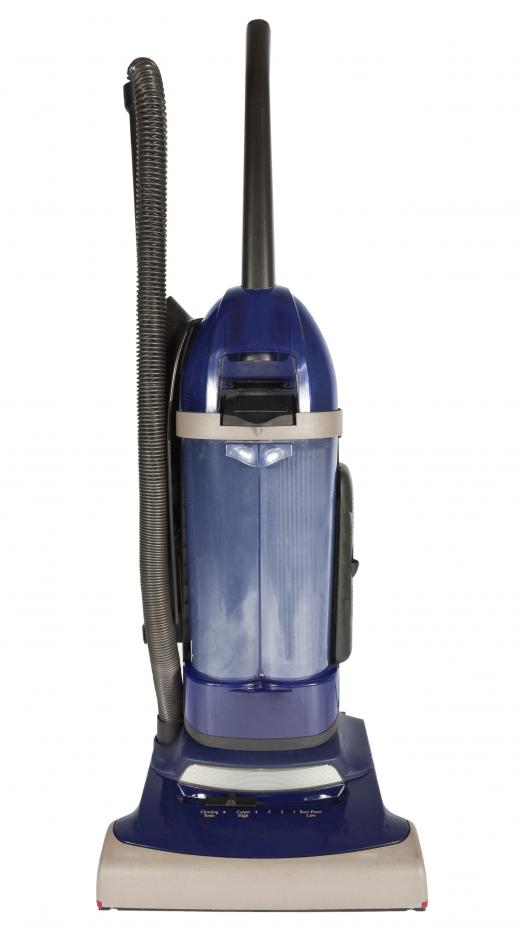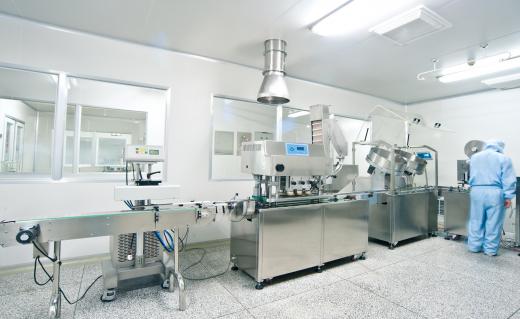A cleanroom is an area of a manufacturing plant or laboratory where air quality and the environment is carefully controlled to protect from contamination. Care must be taken to ensure a cleanroom stays clean, as higher than allowed levels of outside pollutants can contaminate products or experiments, or lead to a shutdown of the area until control can be re-established. Cleanroom supplies play a vital role in ensuring that the room is protected and monitored to allow for fast response to any excess contamination. There are many different types of cleanroom supplies used to reduce the risk of contamination, including protective clothing, specialized cleaning equipment, and machines such as air showers and filters.
Workers in a cleanroom cannot simply wander in off the streets; no matter how often a person showers or how clean his or her clothes are, the particulate matter and pollutants brought in on regular clothing, shoes, and even skin, can be hazardous in a cleanroom environment. Many types of cleanroom supplies are garments and coverings that help ensure that workers do not accidentally contaminate the room. Gloves, hairnets, shoe coverings, and sterile gowns may all be worn by workers to protect the integrity of the room.

Some cleanroom supplies are meant to restore the room after contamination, or simply keep it clean after a day's work. Specialized vacuums are often employed to pick up stray particles of dust and particulates, though they must be designed to prevent carbon dioxide and other fumes from escaping the vacuum cleaner itself. Highly absorbent mops are used to prevent the spread of contaminants, along with easily cleanable mop buckets.

When workers enter a cleanroom, they may have to use machines and equipment that provide sterilizing treatments. Air showers use pressurized jets of air to blast away any contaminating particles, while shoe brushes rub off any dirt or other pollutants that may be lodged in footwear. Tacky mats also assist with shoe cleaning, by causing dirt, dust, and other materials that might be tracked into the cleanroom to stick to a slightly tacky, absorbent floor mat.
Cleanroom supplies also typically include devices for monitoring and measuring the amount of current particulate matter in the room. These devices, which may include manual meters or electronic sensors, keep a constant watch on the air quality and provide alerts if particulate contamination approaches unsafe levels. These cleanroom supplies may also be linked to fan and temperature systems, to help ensure that the airflow and temperature in the room are also within standard ranges.

